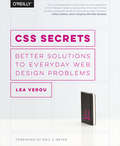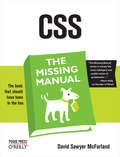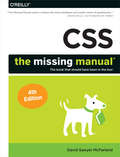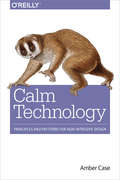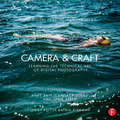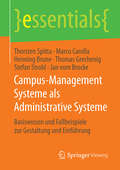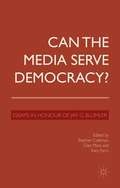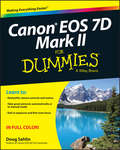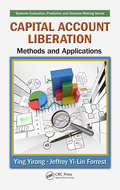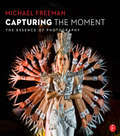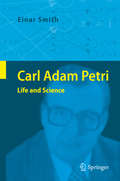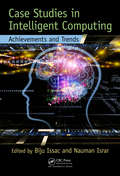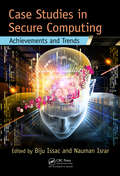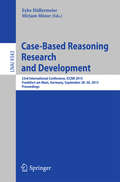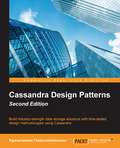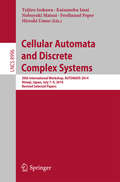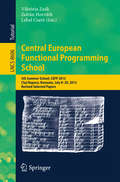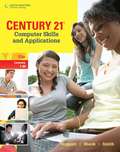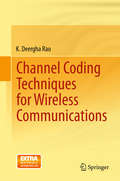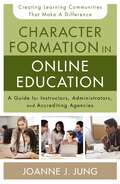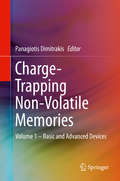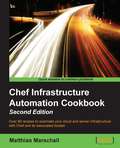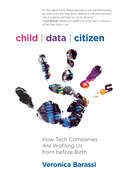- Table View
- List View
CSS Secrets: Better Solutions to Everyday Web Design Problems
by Lea VerouIn this practical guide, CSS expert Lea Verou provides 47 undocumented techniques and tips to help intermediate-to advanced CSS developers devise elegant solutions to a wide range of everyday web design problems.Rather than focus on design, CSS Secrets shows you how to solve problems with code. You'll learn how to apply Lea's analytical approach to practically every CSS problem you face to attain DRY, maintainable, flexible, lightweight, and standards-compliant results.Inspired by her popular talks at over 60 international web development conferences, Lea Verou provides a wealth of information for topics including:Backgrounds and BordersShapesVisual EffectsTypographyUser ExperienceStructure and LayoutTransitions and Animations
CSS: The Missing Manual
by David Sawyer McFarlandWeb site design has grown up. Unlike the old days, when designers cobbled togetherchunky HTML, bandwidth-hogging graphics, and a prayer to make their sites look good,Cascading Style Sheets (CSS) now lets your inner designer come out and play. But CSSisn't just a tool to pretty up your site; it's a reliable method for handling allkinds of presentation--from fonts and colors to page layout. CSS: The MissingManual clearly explains this powerful design language and how you can use it tobuild sparklingly new Web sites or refurbish old sites that are ready for an upgrade.Like their counterparts in print page-layout programs, style sheets allowdesigners to apply typographic styles, graphic enhancements, and precise layoutinstructions to elements on a Web page. Unfortunately, due to CSS's complexity andthe many challenges of building pages that work in all Web browsers, most Web authorstreat CSS as a kind of window-dressing to spruce up the appearance of their sites.Integrating CSS with a site's underlying HTML is hard work, and often frustratinglycomplicated. As a result many of the most powerful features of CSS are left untapped.With this book, beginners and Web-building veterans alike can learn how to navigatethe ins-and-outs of CSS and take complete control over their Web pages'appearance.Author David McFarland (the bestselling author of O'Reilly's Dreamweaver: TheMissing Manual) combines crystal-clear explanations, real-world examples, a dashof humor, and dozens of step-by-step tutorials to show you ways to design sites withCSS that work consistently across browsers. You'll learn how to:Create HTML that's simpler, uses less code, is search-engine friendly, andworks well with CSSStyle text by changing fonts, colors, font sizes, and adding bordersTurn simple HTML links into complex and attractive navigation bars-completewith CSS-only rollover effects that add interactivity to your Web pagesStyle images to create effective photo galleries and special effects likeCSS-based drop shadowsMake HTML forms look great without a lot of messy HTMLOvercome the most hair-pulling browser bugs so your Web pages work consistentlyfrom browser to browserCreate complex layouts using CSS, including multi-column designs that don'trequire using old techniques like HTML tablesStyle Web pages for printingUnlike competing books, this Missing Manual doesn't assume that everyone in theworld only surfs the Web with Microsoft's Internet Explorer; our book providessupport for all major Web browsers and is one of the first books to thoroughlydocument the newly expanded CSS support in IE7, currently in beta release.Want to learn how to turn humdrum Web sites into destinations that will captureviewers and keep them longer? Pick up CSS: The Missing Manual and learn thereal magic of this tool.
CSS: The Missing Manual (Missing Manual Ser.)
by David Sawyer McFarlandCSS lets you create professional-looking websites, but learning its finer points can be tricky—even for seasoned web developers. This fully updated edition provides the most modern and effective tips, tricks, and tutorial-based instruction on CSS available today. Learn how to use new tools such as Flexbox and Sass to build web pages that look great and run fast on any desktop or mobile device. Ideal for casual and experienced designers alike.The important stuff you need to know:Start with the basics. Write CSS-friendly HTML, including the HTML5 tags recognized by today’s browsers.Design for mobile devices. Create web pages that look great when visitors use them on the go.Make your pages work for you. Add animations that capture the imagination, and forms that get the job done.Take control of page layouts. Use professional design techniques such as floats and positioning.Make your layouts more flexible. Design websites with Flexbox that adjust to different devices and screen sizes.Work more efficiently. Write less CSS code and work with smaller files, using Syntactically Awesome Stylesheets (Sass).
Calm Technology: Principles and Patterns for Non-Intrusive Design
by Amber CaseHow can you design technology that becomes a part of a user’s life and not a distraction from it? This practical book explores the concept of calm technology, a method for smoothly capturing a user’s attention only when necessary, while calmly remaining in the background most of the time. You’ll learn how to design products that work well, launch well, are easy to support, easy to use, and remain unobtrusive.Author Amber Case presents ideas first introduced by researchers at Xerox PARC in 1995, and explains how they apply to our current technology landscape, especially the Internet of Things. This book is ideal for UX and product designers, managers, creative directors, and developers. You’ll learn:The importance and challenge of designing technology that respects our attentionPrinciples of calm design—peripheral attention, context, and ambient awarenessCalm communication patterns—improving attention through a variety of sensesExercises for improving existing products through calm technologyPrinciples and patterns of calm technology for companies and teamsThe origins of calm technology at Xerox PARC
Camera & Craft: (The Digital Imaging Masters Series) (The Digital Imaging Masters Series)
by Andy Batt Candace Dobro Jodie Steen#2 on Photo.net's list of Best Photography Books of 2014! To create successful imagery, you need to balance technical know-how and aesthetic vision. In Camera & Craft, we deconstruct photographic principles in new ways to help you think through your process. Together with nine guest photographers, we explore photographic practice and follow up with inventive exercises and demonstrations that challenge you to engage with your tools—all with the goal of helping you work more creatively. Along the way are conversations with our guest photographers that address each topic, from how the professionals work with clients and models to what they think about as they look through the viewfinder. Here’s what you’ll find inside: Advice and insights from professionals working in a variety of fields, from photojournalism and portraiture to fine-art, landscape and commercial photography Technical explanations about how photographic tools work—so you can connect knowledge to your practice and work more instinctively and creatively Key steps for improving digital workflow Innovative exercises at the end of each chapter as well as on our companion website that encourage you to experiment with and understand the photographic process—from learning how far you can push your camera’s sensor to exploring the effects of neutral vs. creative color Interviews with technical and creative experts about developing skills and making images that matter This book is part of The Digital Imaging Masters Series, which features cutting-edge information from the most sought-after and qualified professionals and instructors in the photography field. Based on the progressive curriculum of the Master of Professional Studies in Digital Photography (MPS DP) program created by Katrin Eismann at the School of Visual Arts (SVA) in New York City, these books are the next best thing to being in the classroom with the Digital Photography Masters themselves.
Campus-Management Systeme als Administrative Systeme: Basiswissen und Fallbeispiele zur Gestaltung und Einführung (essentials)
by Jan Vom Brocke Thorsten Spitta Marco Carolla Henning Brune Thomas Grechenig Stefan StroblDie Autoren vermitteln, was den Softwaretyp Campus-Management ausmacht, welche Funktionen zum Kern eines CMS gehören und welche nicht benötigt werden. Sie skizzieren die Datenbasis solcher Systeme in einem Referenz-Datenmodell. Vertiefend wird dieses Modell im Buch Ein Referenz-Datenmodell für Campus-Management-Systeme in deutschsprachigen Hochschulen (Carolla 2015) empirisch validiert beschrieben. Neben den Charakteristika Administrativer Systeme im Hochschulbereich illustrieren die Autoren die Einführung zweier produktiver CMS, die als Eigenentwicklungen in Bielefeld und Wien entstanden sind.
Can the Media Serve Democracy?
by Stephen Coleman Giles Moss Katy ParryThis landmark collection brings leading scholars in the field of political communication to debate one of the most important questions of our age: Can the media serve democracy? For the media to be democratic, they must enter into a positive relationship with their readers, viewers and listeners as citizens rather than consumers who buy things, audiences who gaze upon spectacles or isolated egos, obsessed with themselves. The media's first task is to remind people that they are inhabitants of a world in which they can make a difference. By enabling citizens to encounter and make sense of events, relationships and cultures of which they have no direct experience, the media constitute a public arena in which members of the public come together as more than passing strangers.
Canon EOS 7D Mark II For Dummies
by Doug SahlinGet great digital shots with your Canon EOS 7D Mark II This full-color guide to the features and functions of the Canon EOS 7D Mark II makes it easy for first-time users to get the most out of the camera and capture cool, professional-level photos. Packed with examples on how to create eye-popping digital photos, Canon EOS 7D Mark II For Dummies gives you a plain-English tour of the camera's controls, shows how to manipulate focus and color, gives step-by-step instructions on how to shoot better low-light and action shots, and so much more. Digital Single Lens Reflex (DSLR) cameras offer full control over exposure settings while also providing pre-sets and auto mode options for beginners. If you're just picking up--or considering buying--a Canon EOS 7D Mark II camera, this fun and friendly guide takes the intimidation out of making sense of the bells and whistles so you can get right down to snapping stunning photos. Covers shooting in auto mode and using live view and playback modes Explains how to dial in exposure and use lighting controls Includes easy tips for printing, posting photos online, and other ways to share images Gives you ten photo editing tricks and pro functions If you're an amateur photographer who wants better-than-entry-level gear, or a pro looking for a budget camera to add to your collection, Canon EOS 7D Mark II For Dummies has the information you need to get more bang for your buck out of this powerful camera.
Capital Account Liberation: Methods and Applications (Systems Evaluation, Prediction, and Decision-Making)
by Ying Yirong Jeffrey Yi-Lin ForrestAlong with the development of economic globalization, many countries have begun to relax their controls on their capital accounts. However, the recent financial crises in Latin American countries as well as the exchange rate crises in Southeast Asian countries have shown that there is major risk associated with capital account liberalization.This b
Capturing The Moment: The Essence of Photography
by Michael FreemanThis is not a book about the fundamentals of shutter speed or how your camera works; it is a book that will teach photographers of all levels how to work with their cameras to capture moments whether they are occurring quickly or unfolding over many hours. Capturing the Moment is about a gesture, an expression, a ball in the net, a whale breaching, like Marilyn Monroe’s skirt flying up or Alfred Eisenstaedt’s image of a kiss between a soldier and nurse in Times Square. Moments in all forms are the true core of photography, and this book will explain how to anticipate them, recognise them, choose them, and capture them, through the eyes and wisdom of award-winning photographer and celebrated author Michael Freeman.
Carl Adam Petri: Life and Science
by Einar SmithThe book presents the life and works of one of Germany's most famous computer scientists, Carl Adam Petri. It is written in a vivid and entertaining manner, providing an in-depth discussion of the background behind Petri's best-known contribution to computer science, the Petri net. In this way the book can be read as a first introduction to nets, but it also covers the theoretical, physical and philosophical foundations behind nets, thus facilitating a comprehensive understanding of the wider range of Petri's works. The book is intended for readers with a previous knowledge in computer science, as well as for "interested non-professionals", who want to get to know a remarkable personality of contemporary science.
Case Studies in Intelligent Computing: Achievements and Trends
by Biju Issac Nauman IsrarAlthough the field of intelligent systems has grown rapidly in recent years, there has been a need for a book that supplies a timely and accessible understanding of this important technology. Filling this need, Case Studies in Intelligent Computing: Achievements and Trends provides an up-to-date introduction to intelligent systems.This edited book
Case Studies in Secure Computing: Achievements and Trends
by Biju Issac Nauman IsrarThis book gathers the latest research with case studies in secure computing from many researchers. It compiles the recent work and findings through case studies, where the growing security attacks and countermeasures in the mobile and networking world has been explained, along with other pertinent security issues with the technology of the application itself. It discusses the challenges faced and solutions proposed by different researchers in this area.
Case Studies in System of Systems, Enterprise Systems, and Complex Systems Engineering (Complex and Enterprise Systems Engineering)
by Alex Gorod Brian E. White Vernon Ireland S. Jimmy Gandhi Brian SauserSuitable as a reference for industry practitioners and as a textbook for classroom use, Case Studies in System of Systems, Enterprise Systems, and Complex Systems Engineering provides a clear understanding of the principles and practice of system of systems engineering (SoSE), enterprise systems engineering (ESE), and complex systems engineering (C
Case-Based Reasoning Research and Development: 23rd International Conference, ICCBR 2015, Frankfurt am Main, Germany, September 28-30, 2015. Proceedings (Lecture Notes in Computer Science #9343)
by Eyke Hüllermeier Mirjam MinorThis book constitutes the refereed proceedings of the 23rd International Conference on Case-Based Reasoning Research and Development, ICCBR 2015, held in Frankfurt am Main, Germany, in September 2015. The 26 revised full papers presented were carefully reviewed and selected from 37 submissions. The papers cover a wide range of CBR topics that are of interest both to researchers and practitioners from foundations of Case-Based Reasoning; over CBR systems for specific tasks and related fields; up to CBR systems, applications and lessons learned in specific areas of expertise such as health; e-science; finance; energy, logistics, traffic; game/AI; cooking; diagnosis, technical support; as well as knowledge and experience management
Cassandra Design Patterns - Second Edition
by Rajanarayanan ThottuvaikkatumanaBuild real-world, industry-strength data storage solutions with time-tested design methodologies using CassandraAbout This BookExplore design patterns which co-exist with legacy data stores, migration from RDBMS, and caching technologies with CassandraLearn about design patterns and use Cassandra to provide consistency, availability, and partition tolerance guarantees for applicationsHandle temporal data for analytical purposesWho This Book Is ForThis book is intended for big data developers who are familiar with the basics of Cassandra and wish to understand and utilize Cassandra design patterns to develop real-world big data solutions. Prior knowledge of RDBMS solutions is assumed.What You Will LearnEnable Cassandra to co-exist with RDBMS and other legacy data storesExplore various design patterns to build effective and robust storage solutionsMigrate from RDBMS-based data stores and caching solutions to CassandraUnderstand the behaviour of Cassandra when trying to balance the needs of consistency, availability, and partition toleranceDeal with time stamps related to data effectivelySee how Cassandra can be used in analytical use casesApply the design patterns covered in this book in real-world use casesIn DetailThere are many NoSQL data stores used by big data applications. Cassandra is one of the most widely used NoSQL data stores that is frequently used by a huge number of heavy duty Internet-scale applications. Unlike the RDBMS world, the NoSQL landscape is very diverse and there is no one way to model data stores. This mandates the need to have good solutions to commonly seen data store design problems. Cassandra addresses such common problems simply.If you are new to Cassandra but well-versed in RDBMS modeling and design, then it is natural to model data in the same way in Cassandra, resulting in poorly performing applications and losing the real purpose of Cassandra. If you want to learn to make the most of Cassandra, this book is for you.This book starts with strategies to integrate Cassandra with other legacy data stores and progresses to the ways in which a migration from RDBMS to Cassandra can be accomplished. The journey continues with ideas to migrate data from cache solutions to Cassandra. With this, the stage is set and the book moves on to some of the most commonly seen problems in applications when dealing with consistency, availability, and partition tolerance guarantees.Cassandra is exceptionally good at dealing with temporal data and patterns such as the time-series pattern and log pattern, which are covered next. Many NoSQL data stores fail miserably when a huge amount of data is read for analytical purposes, but Cassandra is different in this regard. Keeping analytical needs in mind, you'll walk through different and interesting design patterns.No theoretical discussions are complete without a good set of use cases to which the knowledge gained can be applied, so the book concludes with a set of use cases you can apply the patterns you've learned.Style and approachThis book is written in very simple language and an engaging style complete with examples in every chapter and real-world use cases at the end of the book.
Cellular Automata and Discrete Complex Systems: 20th International Workshop, AUTOMATA 2014, Himeji, Japan, July 7-9, 2014, Revised Selected Papers (Lecture Notes in Computer Science #8996)
by Teijiro Isokawa Katsunobu Imai Nobuyuki Matsui Ferdinand Peper Hiroshi UmeoThis book constitutes revised selected papers from the 20th International Workshop on Cellular Automata and Discrete Complex Systems, AUTOMATA 2014, held in Himeji, Japan, in July 2014. The 10 regular papers included in this volume were carefully reviewed and selected from a total of 25 submissions. It also contains one invited talk in full paper length.
CentOS High Availability
by Mitja ResmanThis book is targeted at system engineers and system administrators who want to upgrade their knowledge and skills in high availability and want to learn practically how to achieve high availability with CentOS Linux. You are expected to have good CentOS Linux knowledge and basic networking experience.
Central European Functional Programming School: 5th Summer School, CEFP 2013, Cluj-Napoca, Romania, July 8-20, 2013, Revised Selected Papers (Lecture Notes in Computer Science #8606)
by Viktória Zsók Zoltán Horváth Lehel CsatóThis volume presents the revised lecture notes of selected talks given at the Fifth Central European Functional Programming School, CEFP 2013, held in July 2013 in Cluj-Napoca, Romania. The 14 revised full papers presented were carefully reviewed and selected. The lectures cover a wide range of distributed and multicore functional programming subjects. The last 5 papers are selected papers of the PhD Workshop organized for the participants of the summer school.
Century 21® Computer Skills and Applications, Lessons 1–90
by Jack P. Hoggatt Jon A. Shank James R. SmithProvide your students with the best in keyboarding education from the proven keyboarding leader--now stronger than ever! This latest edition of CENTURY 21 COMPUTER SKILLS AND APPLICATIONS helps students prepare for a lifetime of keyboarding and computer success with innovative solutions updated to reflect today's business challenges. Students tap into the latest keyboarding technology, learn to master computer applications using Microsoft Office 2010/2013, and increase communication skills with relevant activities throughout this best-selling text. Trust the leader who has taught more than 85 million people to type--bringing 100 years of publishing experience and a century of innovations together in a complete line of keyboarding solutions.
Channel Coding Techniques for Wireless Communications
by K. Deergha RaoThe book discusses modern channel coding techniques for wireless communications such as turbo codes, low parity check codes (LDPC), space-time coding, Reed Solomon (RS) codes and convolutional codes. Many illustrative examples are included in each chapter for easy understanding of the coding techniques. The text is integrated with MATLAB-based programs to enhance the understanding of the subject's underlying theories. It includes current topics of increasing importance such as turbo codes, LDPC codes, LT codes, Raptor codes and space-time coding in detail, in addition to the traditional codes such as cyclic codes, BCH and RS codes and convolutional codes. MIMO communications is a multiple antenna technology, which is an effective method for high-speed or high-reliability wireless communications. PC-based MATLAB m-files for the illustrative examples are included and also provided on the accompanying CD, which will help students and researchers involved in advanced and current concepts in coding theory. Channel coding, the core of digital communication and data storage, has undergone a major revolution as a result of the rapid growth of mobile and wireless communications. The book is divided into 11 chapters. Assuming no prior knowledge in the field of channel coding, the opening chapters (1 - 2) begin with basic theory and discuss how to improve the performance of wireless communication channels using channel coding. Chapters 3 and 4 introduce Galois fields and present detailed coverage of BCH codes and Reed-Solomon codes. Chapters 5-7 introduce the family of convolutional codes, hard and soft-decision Viterbi algorithms, turbo codes, BCJR algorithm for turbo decoding and studies trellis coded modulation (TCM), turbo trellis coded modulation (TTCM), bit-interleaved coded modulation (BICM) as well as iterative BICM (BICM-ID) and compares them under various channel conditions. Chapters 8 and 9 focus on low-density parity-check (LDPC) codes, LT codes and Raptor codes. Chapters 10 and 11 discuss MIMO systems and space-time (ST) coding.
Character Formation in Online Education: A Guide for Instructors, Administrators, and Accrediting Agencies
by Joanne J. JungThe unfortunate reputation of online courses today is one of little or no effort on the professor's part and little or no learning on the student's part. A missing element in online courses is the kind of mutual engagement between student and instructor that provides not only a higher level of learning but also lasting character formation within the student. Character Formation in Online Education stems from author Joanne Jung's years of experience teaching online courses with the aim of improving the teaching environment for professors and the learning environment for students. By replicating, customizing, and incorporating the best and most effective practices of what a great professor does in on-campus classes, reimagined for an online delivery system, Jung shows how a higher level of learning and transformation can be achieved through online learning communities. Handy and practical, this user-friendly book provides guidance, helpful tools, and effective suggestions for growing learning communities in online courses that are marked by character growth in students—the kind of growth that is central to the mission of Christian higher education.
Charge-Trapping Non-Volatile Memories: Volume 1 – Basic and Advanced Devices
by Panagiotis DimitrakisThis book describes the basic technologies and operation principles of charge-trapping non-volatile memories. The authors explain the device physics of each device architecture and provide a concrete description of the materials involved as well as the fundamental properties of the technology. Modern material properties used as charge-trapping layers, for new applications are introduced.
Chef Infrastructure Automation Cookbook - Second Edition
by Matthias MarschallThis book is for system engineers and administrators who have a fundamental understanding of information management systems and infrastructure. It helps if you've already played around with Chef; however, this book covers all the important topics you will need to know. If you don't want to dig through a whole book before you can get started, this book is for you, as it features a set of independent recipes you can try out immediately.
Child Data Citizen: How Tech Companies Are Profiling Us from Before Birth
by Veronica BarassiAn examination of the datafication of family life--in particular, the construction of our children into data subjects.Our families are being turned into data, as the digital traces we leave are shared, sold, and commodified. Children are datafied even before birth, with pregnancy apps and social media postings, and then tracked through babyhood with learning apps, smart home devices, and medical records. If we want to understand the emergence of the datafied citizen, Veronica Barassi argues, we should look at the first generation of datafied natives: our children. In Child Data Citizen, she examines the construction of children into data subjects, describing how their personal information is collected, archived, sold, and aggregated into unique profiles that can follow them across a lifetime.
